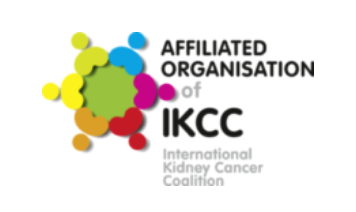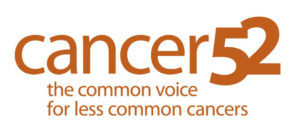TKIs and diarrhoea
Martin’s Help Sheet: PATIENT SURVEY OF TIME OF TAKING TKIs AND DIARRHOEA
Background
The most common treatment for patients with secondary kidney cancer are drugs called Tyrosine Kinase Inhibitors (TKIs), which are a type of biological therapy called protein kinase inhibitors. Protein kinase is a type of chemical messenger (an enzyme) that plays a part in the growth of cancer cells. TKIs block the protein kinase to stop the cancer growing, thereby stopping the growth of a tumour or shrinking it. The main TKIs are sunitinib (Sutent), pazopanib (Votrient) or axitinib (Inlyta).
Whilst these drugs are often very effective, most patients suffer side effects which can have a severe effect on quality of life. This survey is intended to assist in managing one of the main side effects, diarrhoea, by informing the choice of when to take the drug to minimise diarrhoea.
Survey
A total of 38 patients or carers responded to the survey, a relatively small sample but hopefully representative. Of those responses, 13 were taking sunitinib (34%), 18 taking pazopanib (47%) and 7 taking axitinib (18%)
When the drug is taken
Looking at the time of day/relationship to food when taking the TKIs: Only 5% take the drug with food (2 persons), but both only had none to mild diarrhoea. 82% of patients took the drug on a presumed empty stomach (patients who responded either: before food or before bed or first thing). Of those, 57% suffered none to mild diarrhoea. Of the 82%, the most common approaches were: take before food (32%), take before bed (26%). In summary, the majority of patients favoured taking the drug on an empty stomach.
Sunitinib and pazopanib are taken once a day, whereas axitinib is taken twice a day, which may mean that a different approach is taken for each tablet.
Relationship between when the drug is taken and diarrhoea suffered
Looking at the relationship between when the TKI is taken and the amount of diarrhoea suffered, considering high levels of diarrhoea, the highest percentage of moderate to severe diarrhoea suffered is those who took it first thing (75%). The lowest percentage of moderate to severe diarrhoea was suffered by those taking the TKI with food (although only 2 patients). The next lowest percentage of moderate to severe diarrhoea was suffered by those taking the TKI after food (generally presumed to be 2 hours after food).
Of those patients who suffered no or mild diarrhoea, the 2 patients who took it with food were the highest percentage (100%), both of these were on axitinib, but of those who took it at other times, 80% of those patients also only suffered no to mild diarrhoea, so there is not considered to be a significant advantage in taking axitinib with food.
Of all the patients with little to mild diarrhoea, the next highest percentage was those who took it after food (77%), followed by those who took it before food (67%). In summary, with any of the TKIs, the majority of patients who suffered none or only mild diarrhoea took the TKI on an empty stomach (2 hours after food to just before food, or at the beginning or end of the day).
Comparison of different TKIs taken and diarrhoea suffered
Analysing the degree of diarrhoea suffered for each TKI, for those patients on sunitinib, 10 of 13 (77% ) have none to mild diarrhoea, with only one suffering severe diarrhoea. Of the 10 patients with little diarrhoea, 5 took it before bed (suggesting that this may be the most beneficial approach), and 3 first thing in morning, 2 after food.
For patients on pazopanib 8 of 18 (44%) have none to mild diarrhoea, with 5 suffering severe diarrhoea. Taking the tablet before food was the most popular, favoured by 9 patients (50%), and of those 6 had none to mild diarrhoea (66%). Second most popular was before bed with 5 patients, but of those 4 suffered moderate to severe diarrhoea, so this is perhaps not recommended. It would appear the most beneficial approach may be to take the tablet before food. There was a much higher incidence of moderate to severe diarrhoea for patients on pazopanib, compared to sunitinib and axitinib, suggesting that diarrhoea can be more problematical for patients on pazopanib.
For patients on axitinib, 6 of 7 (85%) have none to mild diarrhoea, with one suffering moderate to severe diarrhoea. This would appear to suggest that diarrhoea is not such a problematic side effect for those on axitinib, although the sample size is small. No particular time of day was strongly favoured, with a spread between the various times, although “after food” had the most responses, at 3 patients. This would appear to suggest that axitinib is less sensitive to when the drug is taken, which is perhaps fortuitous, since it has to be taken twice daily, allowing less flexibility.
The table below gives the correlation between time the TKI is taken and level of diarrhoea.
| Diarrhoea Suffered (no of patients/%) | ||||||||||
| Tablet taken | No of patients | % | None | % | mild | % | moderate | % | severe | % |
| Before food | 12 | 32% | 2 | 17% | 6 | 50% | 2 | 17% | 4 | 33% |
| with food | 2 | 5% | 1 | 50% | 1 | 50% | 0 | 0% | 0 | 0% |
| after food | 9 | 24% | 3 | 33% | 4 | 44% | 2 | 22% | 0 | 0% |
| before bed | 10 | 26% | 4 | 40% | 1 | 10% | 4 | 40% | 1 | 10% |
| first thing | 4 | 11% | 2 | 50% | 0 | 0% | 2 | 50% | 1 | 25% |
Table 1: Analysis of when TKI is taken and diarrhoea suffered.
Please help other patients:
Please keep us updated with useful information that will help other cancer patients. You can email us with your tips so we can regularly add to this resource.
Thanks to all the KCSN members for their input, and especially to Martin for his patience and willingness to collate this information to help and support others.
Written December 2016
Download a pdf of this help sheet here: Patient survey of time of taking TKIs and diarrhoea


